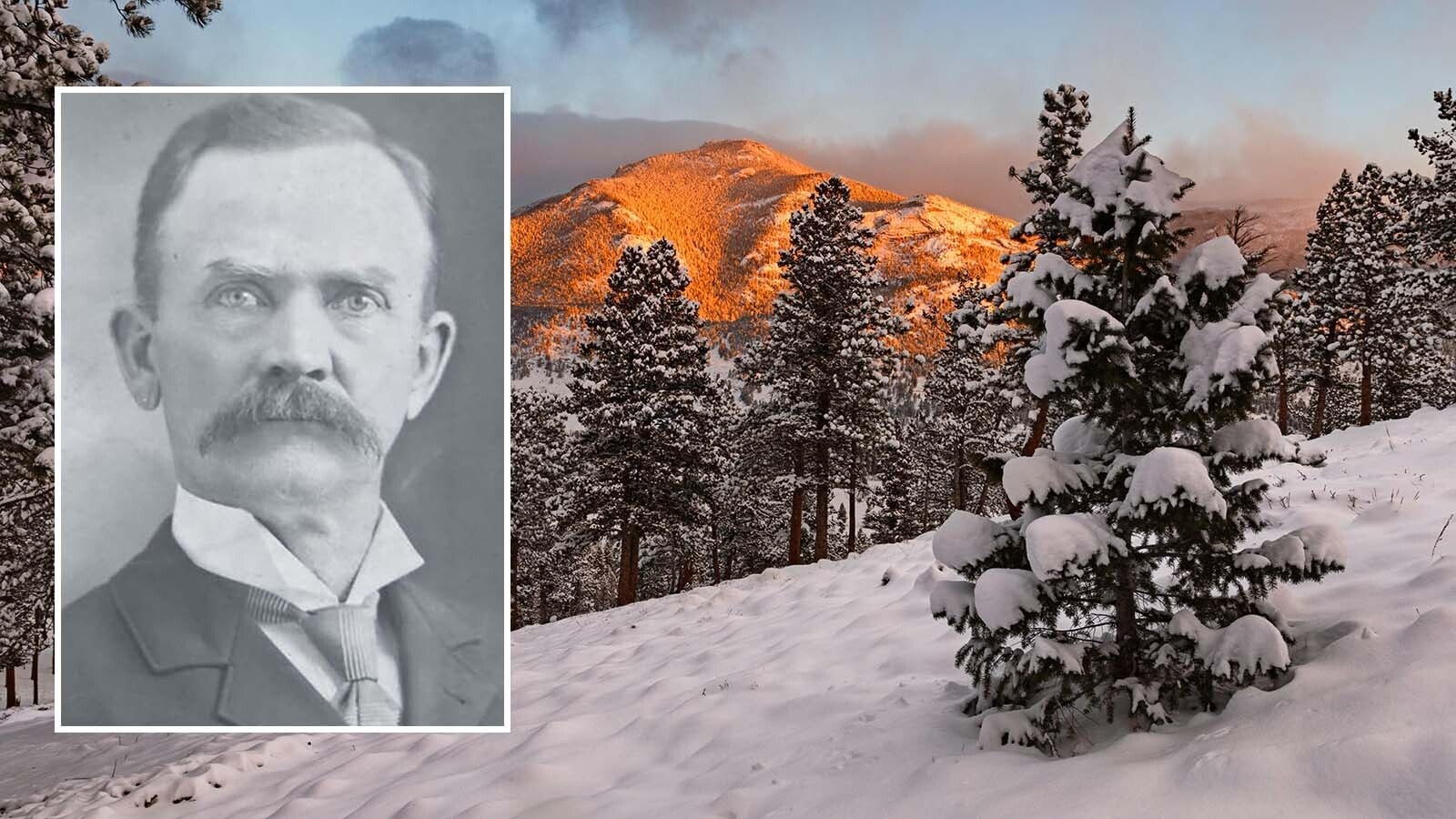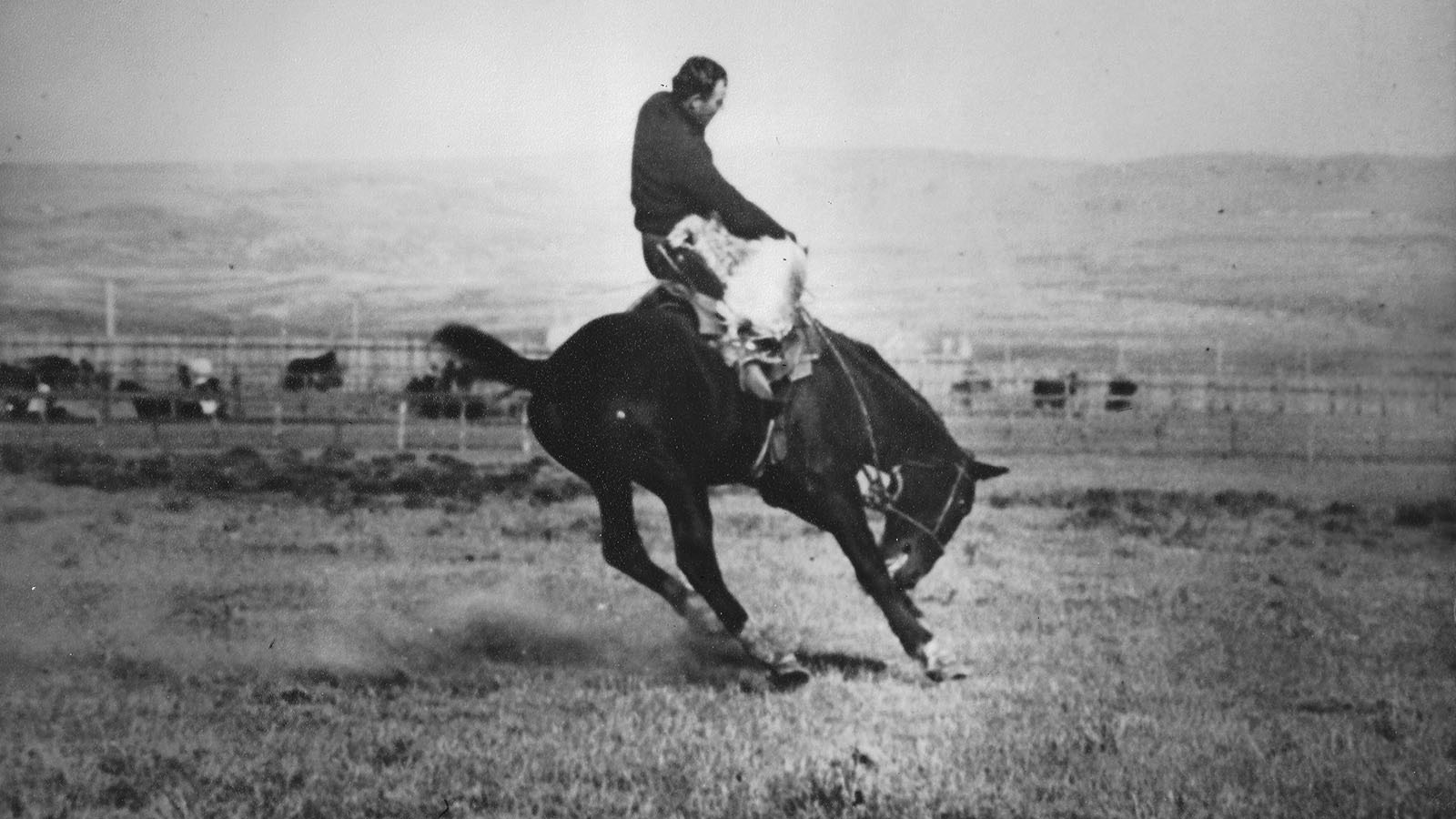Readers can enjoy hundreds of stories written about the daring exploits of surly outlaws who committed cold-blooded homicides in the nineteenth-century American West. Fewer opportunities arise to read about their victims, many of whom served in law enforcement when they were shot down. The second and third murders of lawmen in the Territory of Wyoming are two cases in point.
On the morning of August 19, 1878, twenty gun shots rang through the mountain air of Rattlesnake Canyon along the slope of Elk Mountain, Wyoming. After the acrid gun smoke dissipated, the slain bodies of two popular Carbon County law enforcement officers lay concealed beneath uprooted brush and tree limbs in the bottom of a dry creek bed. Big Nose George Parott and his gang of assassins reloaded their weapons and rode out of the valley, dispersing in several different directions.
One of the dead officers was thirty-two-year-old Robert Widdowfield, a well-known deputy sheriff of Carbon County and experienced tracker from the Percy train robbery posse a few months earlier.
Originally from England, Widdowfield had been a prominent resident of Carbon for years when he left a widowed wife and offspring. His relatives stayed in the region for decades after the murders. Some established a monument at the murder scene, took care of his grave in the Carbon Cemetery, and kept his memory alive in the county.
UP Detective And Tracker
The other officer was Henry H. “Tip” Vincent, who worked as a detective and tracker for the Union Pacific Railroad, the company that suffered an attempted robbery by the Parott gang only two days earlier. Not much has been written about the early life of this apparent bachelor.
A few historical tidbits suggest Tip was born in Iowa in 1839. He first shows up in the Wyoming Territory in the 1870 Green River City census. About 1873, he settled in Rawlins, where he became good friends with lawman James Rankin and others who shared his passion for fishing.
Tip became familiar with the county landscape during the 1870s and may have gone to work for the Peabody Museum in 1877 gathering dinosaur fossils from the Como Bluff area. A man named Vincent left their employ in 1878 over a salary dispute, but fossil collecting would have put him in regular contact with the Union Pacific, which transported the specimens.
Thomas Edison And Texas Jack Omohundro In Carbon County
The summer of 1878 in Rawlins witnessed a flurry of activity along the railroad when numerous scientists and county residents gathered to witness the totality of an eclipse. Famous inventor Thomas Alva Edison attended, but when he arrived, the town was so crowded he had to double up in a hotel room.
One evening, a loud knock sounded on the door, awakening him from a comfortable slumber. Texas Jack Omohundro entered the room excitedly, anxious to meet the famous inventor. A full-fledged Westerner, Jack was great friends with Buffalo Bill Cody and was known as a fine pistol shot.
Jack proceeded to shoot through Edison’s window, making a hole in a blade of the weather vane by the freight depot. The gun discharge scared the daylights out of Edison and his bunkmate, but they found out from others the next morning that Texas Jack actually was a nice fellow.
Edison looked for him but learned that Jack had left that Saturday, July 27, along with another man, to guide Dr. Amandus Ferber and Count Otto Franc von Lichenstein of Germany on a three-week hunting and fishing trip through the Sierra Madre Mountains south of Rawlins. Otto Franc is the same man who, five years later, would establish the famous Pitchfork Ranch in the Bighorn Basin of northern Wyoming and would record many of his exploits.
The second guide they hired was the popular local tracker Tip Vincent. All four left Rawlins and hunted until August 16, traveling throughout the mountains, down Savery Creek, around Battle Lake, and across the Continental Divide to the Colorado state line.
On Friday, August 16, the group made it back to Beckman’s ranch, fifteen miles south of Rawlins. Ferber and Franc continued on into Rawlins while Texas Jack and Tip Vincent took care of the pack horses, coming into Rawlins themselves the next morning, August 17.
Ferber and Franc wanted Tip to guide them on their second trip into northern Wyoming, so they talked to him early on the eighteenth.
Tracking The Desperados
Tip asked for a couple of days off to respond to a request that day from the Union Pacific Railroad (UPRR) to serve as a detective. He needed to help track a handful of desperados who recently attempted a train derailment near Medicine Bow. Franc loaned Tip his Sharps rifle to use on the dangerous trip and made plans to meet him later along the northern route of their hunting expedition.
Superintendent Ed Dickinson of the UPRR and Tip Vincent left Rawlins on August 18, arriving at Percy some forty miles to the east at about one o’clock the following morning. There they met up with Deputy Sheriffs James Rankin and Robert Widdowfield to plan a tracking strategy against the outlaws later that day. Widdowfield and Vincent left together at first light Monday, August 19 to pick up the outlaw trail and were never seen alive again.
After the deadly attack on the lawmen at the base of Elk Mountain, the outlaws made off with the Sharps.
Both men had been popular with Carbon County residents. Friends created identical headstones for Widdowfield’s grave at Carbon and Vincent’s grave at Rawlins. Although Widdowfield’s family visited Bob’s burial many times over the years, Vincent’s family apparently never made it out west, and less was known by locals about his life. In fact, Tip’s friends misspelled his last name on the headstone. It would fall to the son of a former sheriff to visit Vincent’s grave every May and leave flowers.
Recently, the Carbon County Museum developed an excellent exhibit on the history of county law enforcement. The narration prominently features Widdowfield and Vincent and their untimely demise. Now their memory will never be forgotten.
Mark E. Miller can be reached at westrider51@outlook.com





